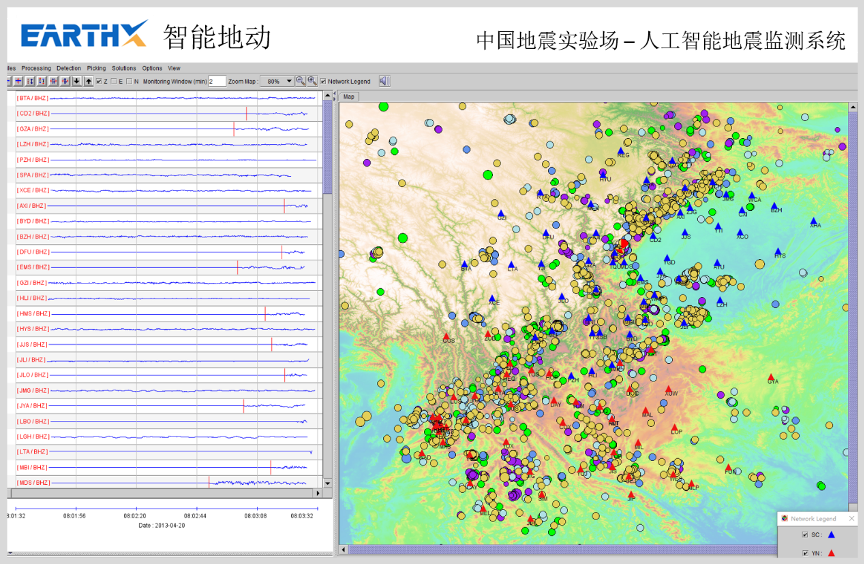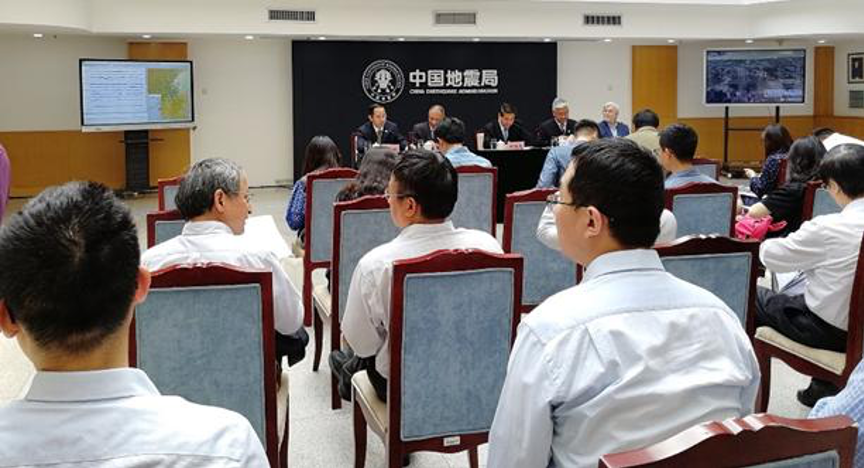The earthquake monitoring system EarthX, driven by artificial intelligence (AI), has been launched as a joint effort between the University of Science and Technology of China (USTC) and China Earthquake Administration (CEA). This is the first AI earthquake monitoring system operated by a government in the world. A paper about the technology was published in Scientific Reports.
Earthquake monitoring has been a very challenging task nowadays. For a large earthquake, an immediate report to the public could serve as an early warning. For medium and small events, the analysis results could tell a great deal of information in the Earth, such as active faults, and even precursors of potential large earthquakes. Besides, massive earthquake data need to be processed in real-time as more seismic stations are installed to monitor earthquakes. Therefore, reporting earthquakes accurately and in real-time is critical for mitigating earthquake hazards.
When an earthquake occurs, the seismic waves will be recorded in the form of a large amount of data. These data will be processed by an earthquake monitoring center. The processing results include key information such as the earthquake location, magnitude, time, depth, and source focal mechanism. Both automatic and manual methods have been applied as a routine process. The automated algorithm works well for large events, but may fail for medium and small ones due to noise. Therefore, it requires seismologists to perform QC on a 24-hour basis every day before releasing the results to the public.
The launch of EarthX represents a new era in earthquake monitoring. It has improved the accuracy and enabled to process a large amount of earthquake data in real-time. Different from many previous earthquake monitoring systems in operation worldwide, EarthX accesses the full waveform information of the incoming earthquake, utilizing the waveform data with the machine learning method allows extracting embedded information deep in the data and generating reliable and accurate results. Automation with the machine learning method without the use of time picks ensures the system operating 24 hours a day with consistent performance. Since the system relies on the waveform pattern rather than individual wiggles or picks in seismograms, it can handle noise, and detect and locate small events (M < 2.0) that are sometimes even difficult for data analysts to identify.

The machine learning flow chart of locating earthquakes in EarthX. The input are three-component data from multiple stations, and the output is a 3D image with a probability of the event location. The highest probability point marks the event location.
After one year of test at China Seismic Experimental Site (CSES) across Sichuan and Yunnan provinces, the evaluation by China Earthquake Administration shows that the accuracy of the results from EarthX is very close to that of human processing based on the comparison of 446 earthquakes occurring in 2019. Furthermore, owing to the novel search engine and machine learning technologies, the system can obtain crucial earthquake information within 1-2 seconds after receiving data. Currently, Japan and US earthquake reporting systems require a few minutes to report an event.

The artificial intelligence real-time earthquake monitoring system launched by USTC and CEA. The red triangle denotes the seismic stations in Yunnan Province, the blue triangle denotes the seismic stations in Sichuan Province, and the chart denotes the earthquake locations automatically reported by the system.
The development is led by Prof. ZHANG Jie of the School of Earth and Space Sciences, USTC. An interdisciplinary team consists of Prof. ZHANG Jie’s group, LI Weiping's group, Prof. CHEN Zhibo's group, and Prof. CHEN Enhong's group from multiple schools at USTC. The team also includes Dr. ZHAO Cuiping's group from the Institute of Earthquake Forecasting (IEF), China Earthquake Administration (CEA).
At present, the system launched by USTC and CEA has attracted much attention at home and abroad. The system is also tested with earthquake data from multiple countries. At the moment, the development team is discussing collaboration opportunities with earthquake monitoring agencies in several countries.

The earthquake monitoring and reporting system (EarthX) demonstrated in CEA.
Paper link: https://doi.org/10.1038/s41598-020-58908-5
(Written by HU Xiaowen, Edited by YE Zhenzhen, USTC News Center)